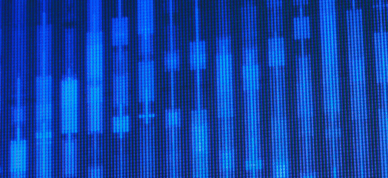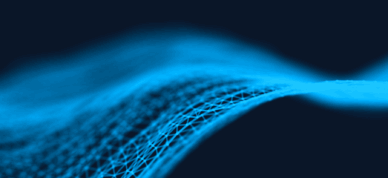The Challenge: Secure One-Way Data Movement Without Compromise
As cyber threats rapidly evolve, critical infrastructure security must advance to keep pace. One-way data transfer solutions, such as data diodes, have long been trusted to enforce network segmentation and prevent data exfiltration or inbound attacks. However, as threats grow more advanced and attack surfaces expand, organizations need solutions that go beyond basic isolation.
A Protocol Filtering Diode (PFD) enhances the hardware-enforced unidirectional nature of a simple diode with protocol filtering at the FPGA level to offer a higher level of protection against cyber threats, making them a preferred choice for safeguarding high-threat environments, addressing the critical limitations of traditional network security tools while aligning with modern Zero Trust Architecture (ZTA) principles and U.S. Government High Threat Network (HTN) mandates.
Why Traditional Solutions Fall Short
Alternatives to PFDs – including firewalls, unidirectional gateways and simple diode solutions – consistently fail to meet the evolving demands of critical infrastructure and classified network defense:
- Firewalls: Software-dependent and bidirectional by design, firewalls introduce exploitable attack surfaces, latency spikes, and additional risk by trusting internal traffic.
- Unidirectional Gateways: Their reliance on software to emulate protocols and replicate data introduces potential vulnerabilities.
- Simple Diode Solutions (SDS): Though hardware-enforced, SDS also rely on software for protocol support and cannot inspect or filter payloads which introduces risk.
What Is a Protocol Filtering Diode (PFD)?
In simple terms, a Protocol Filtering Diode is like a security guard at a one-way door: not only does it make sure nobody sneaks in the wrong way, but it also checks every package leaving to ensure only safe, approved items get through. This approach is more secure than just a one-way door, and it’s why PFDs are trusted in the most sensitive environments, such as military, intelligence, and critical infrastructure networks.
The Tech Behind PFDs: A PFD is a hardware device that enforces one-way data flow between networks, ensuring information can only move out of a secure environment, never in. Unlike simple diode solutions, PFDs go further to also inspect and filter data at the hardware level, using Field-Programmable Gate Arrays (FPGAs) to block unauthorized or malicious content before it leaves the protected network.
PFDs are evaluated by the U.S. Government through a rigorous testing process, including penetration testing by U.S. DoD entities and assessment against rigorous standards – to confirm the device’s ability to enforce strict one-way data flow, resist cyberattacks and maintain compatibility with critical protocols. In addition, select solutions undergo Common Criteria security testing.
Protocol Filtering Diodes in Action
These real-world applications demonstrate how PFDs provide superior security and reliability in both defense and critical infrastructure environments.
- Connecting the U.S. DoD to a High Threat Network (HTN): When the U.S. DoD needs to securely connect classified networks to risky HTNs for mission-critical data sharing, a primary challenge is preventing risk of cyber intrusion or data leakage into sensitive environments. Traditional solutions may either introduce software vulnerabilities or lack the hardware-enforced filtering required by the U.S. Government’s guidance, making them insufficient for HTN connections.
- By deploying a Protocol Filtering Diode, the DoD can achieve
- Hardware-enforced, one-way data transfer and deep protocol inspection
- Significantly reduced risk of external compromise while maintaining operational agility
- Compliance with federal mandates
- By deploying a Protocol Filtering Diode, the DoD can achieve
- A Utility Company Sending OT Logs to IT: A major critical infrastructure utility may need to transfer operational logs and system data from its Operational Technology (OT) network to its IT network for real-time monitoring and compliance reporting. The challenge is to maintain strict network isolation to protect the OT environment from external threats, while still enabling timely data flow. Traditional approaches cannot inspect or filter protocol content, leaving the organization exposed to potential attacks hidden within allowed data streams.
- Implementing a PFD allows the organization to
- Securely and efficiently replicate logs and files
- Block unauthorized or malicious content at the hardware level
- Safeguard operations and ensuring regulatory compliance without sacrificing visibility or efficiency.
- Implementing a PFD allows the organization to
Why PFDs Are the Gold Standard for One-Way Security
In today’s threat landscape, where the stakes could not be higher for governments and critical infrastructure organizations, Protocol Filtering Diodes stand out as the preferred solution for secure, one-way data transfer. By combining hardware-enforced unidirectional flow with protocol inspection and meeting rigorous U.S. Government standards, PFDs address the vulnerabilities inherent in legacy solutions. As organizations strive to comply with strict mandates while maintaining operational efficiency, PFDs deliver the assurance, compliance, and peace of mind required to protect the nation’s most sensitive assets—now and into the future.
Take the Next Step: Owl Cyber Defense’s data diodes, including Protocol Filtering Diodes, are US-based, owned, and operated rigorously tested and globally trusted by U.S. Government, intelligence community, and critical infrastructure leaders. Download our brochure to learn more.



